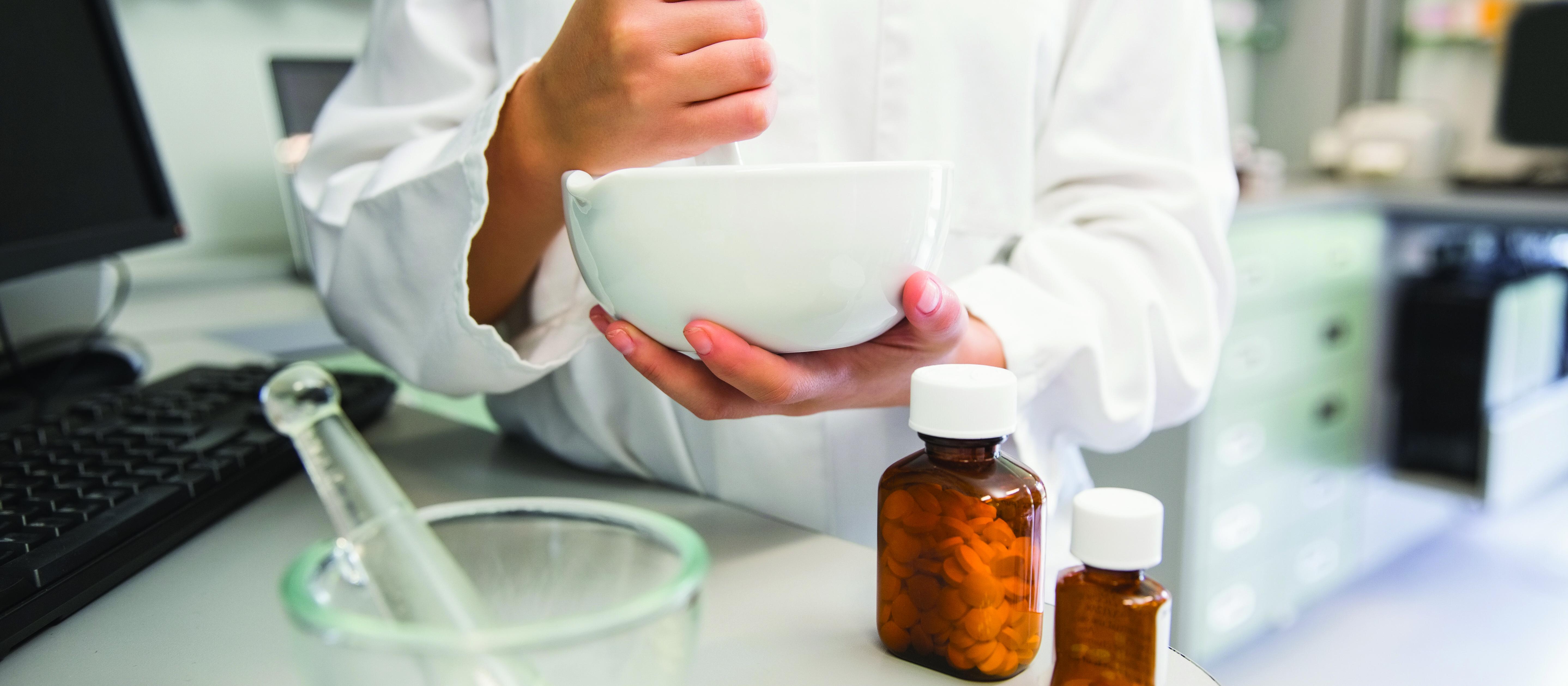Respiratory physician Lutz Beckert considers chronic obstructive pulmonary disease management, including the prevention of COPD, the importance of smoking cessation and pulmonary rehabilitation, and the lifesaving potential of addressing treatable traits. He also discusses the logic of inhaler therapy, moving from single therapy to dual and triple therapy when indicated, as well as other aspects of management
Complementary hormone therapy – what does a GP need to know?
Complementary hormone therapy – what does a GP need to know?

Doctors need to be able to provide patients with good-quality information about the risks and benefits of conventional and complementary medicines, to help patients make informed choices
Kia ora and welcome to New Zealand Doctor Rata Aotearoa
Not a subscriber? Unlock this article by subscribing here.
1. Medsafe. Dietary supplements: Guidance for natural health practitioners, 2013. Available online at http://www.medsafe.govt.nz/profs/NaturalHealth.asp
2. Medical Council of New Zealand. Statement on complementary and alternative medicine, 2011. Available online (pdf) at https://www.mcnz.org.nz/assets/News-and-Publications/Statements/Complementary-and-alternative-medicine.pdf
3. Medical Council of New Zealand. Good prescribing practice, 2016. Available online (pdf) at https://www.mcnz.org.nz/assets/News-and-Publications/Statements/Good-prescribing-practice.pdf
4. Pinkerton JV, Pickar JH. Update on medical and regulatory issues pertaining to compounded and FDA-approved drugs, including hormone therapy. Menopause 2016;23(2):215–23.
5. Delfs TM, Klein S, Fottrell P et al. 24-hour profiles of salivary progesterone. Fertil Steril 1994;62(5):960–66.
6. Jonklaas J, Bianco AC, Bauer AJ et al. Guidelines for the treatment of hypothyroidism: prepared by the American Thyroid Association Task Force on Thyroid Hormone Replacement. Thyroid 2014;24(12):1670–751.
7. Cobin RH, Petak SM, Bledsoe MB et al. American Association of Clinical Endocrinologists (AACE) Reproductive Medicine Committee position statement on bioidentical hormones, 2007. Available online (pdf) at https://www.aace.com/files/position-statements/aacebhstatement071507.pdf
8. Bhasin S, Cunningham GR, Hayes FJ et al. Testosterone therapy in men with androgen deficiency syndromes: an Endocrine Society clinical practice guideline. J Clin Endocrinol Metab 2010;95(6):2536–59.
9. Gaudard AM, Silva de Souza S, Puga ME et al. Bioidentical hormones for women with vasomotor symptoms. Cochrane Database Syst Rev 2016(8):CD010407.
10. Langer RD. The evidence base for HRT: what can we believe? Climacteric 2017;20(2):91–96.
11. US Food and Drug Administration. 2006 Limited FDA survey of compounded drug products, 2006. Available online at https://www.fda.gov/drugs/guidancecomplianceregulatoryinformation/pharmacycompounding/ucm204237.htm
12. Ramin CJ. The hormone hoax. More [magazine], 2013. www.more.com
13. The US Department of Justice. 14 Indicted in connection with New England compounding center and nationwide fungal meningitis outbreak, 2014. Available online at https://www.justice.gov/opa/pr/14-indicted-connection-new-england-compounding-center-and-nationwide-fungal-meningitis
14. Ogilvie CM, Levenberg R, Milsom SR. Bioidentical testosterone cream: a rare cause of postmenopausal virilisation. Aust N Z J Obstet Gynaecol 2009;49(1):116–17.
15. Vashisht A, Wadsworth F, Carey A et al. Bleeding profiles and effects on the endometrium for women using a novel combination of transdermal oestradiol and natural progesterone cream as part of a continuous combined hormone replacement regime. Br J Obstet Gynecol 2005;112(10):1402–6.
16. Astin JA. Why patients use alternative medicine: results of a national study. JAMA 1998;279(19):1548–53.
17. McIntyre E, Saliba AJ, Wiener KK et al. Herbal medicine use behaviour in Australian adults who experience anxiety: a descriptive study. BMC Complement Altern Med 2016;16:60.
18. Tonob D, Melby MK. Broadening our perspectives on complementary and alternative medicine for menopause: A narrative review. Maturitas 2017;99:79–85.




![Barbara Fountain, editor of New Zealand Doctor Rata Aotearoa, and Paul Hutchison, GP and senior medical clinician at Tāmaki Health [Image: Simon Maude]](/sites/default/files/styles/thumbnail_cropped_100/public/2025-03/Barbara%20Fountain%2C%20editor%20of%20New%20Zealand%20Doctor%20Rata%20Aotearoa%2C%20and%20Paul%20Hutchison%2C%20GP%20and%20senior%20medical%20clinician%20at%20T%C4%81maki%20Health%20CR%20Simon%20Maude.jpg?itok=-HbQ1EYA)
![Lori Peters, NP and advanced health improvement practitioner at Mahitahi Hauora, and Jasper Nacilla, NP at The Terrace Medical Centre in Wellington [Image: Simon Maude]](/sites/default/files/styles/thumbnail_cropped_100/public/2025-03/2.%20Lori%20Peters%2C%20NP%20and%20advanced%20HIP%20at%20Mahitahi%20Hauora%2C%20and%20Jasper%20Nacilla%2C%20NP%20at%20The%20Terrace%20Medical%20Centre%20in%20Wellington%20CR%20Simon%20Maude.jpg?itok=sUfbsSF1)
![Ministry of Social Development health and disability coordinator Liz Williams, regional health advisors Mary Mojel and Larah Takarangi, and health and disability coordinators Rebecca Staunton and Myint Than Htut [Image: Simon Maude]](/sites/default/files/styles/thumbnail_cropped_100/public/2025-03/3.%20Ministry%20of%20Social%20Development%27s%20Liz%20Williams%2C%20Mary%20Mojel%2C%20Larah%20Takarangi%2C%20Rebecca%20Staunton%20and%20Myint%20Than%20Htut%20CR%20Simon%20Maude.jpg?itok=9ceOujzC)
![Locum GP Helen Fisher, with Te Kuiti Medical Centre NP Bridget Woodney [Image: Simon Maude]](/sites/default/files/styles/thumbnail_cropped_100/public/2025-03/4.%20Locum%20GP%20Helen%20Fisher%2C%20with%20Te%20Kuiti%20Medical%20Centre%20NP%20Bridget%20Woodney%20CR%20Simon%20Maude.jpg?itok=TJeODetm)
![Ruby Faulkner, GPEP2, with David Small, GPEP3 from The Doctors Greenmeadows in Napier [Image: Simon Maude]](/sites/default/files/styles/thumbnail_cropped_100/public/2025-03/5.%20Ruby%20Faulkner%2C%20GPEP2%2C%20with%20David%20Small%2C%20GPEP3%20from%20The%20Doctors%20Greenmeadows%20in%20Napier%20CR%20Simon%20Maude.jpg?itok=B0u4wsIs)
![Rochelle Langton and Libby Thomas, marketing advisors at the Medical Protection Society [Image: Simon Maude]](/sites/default/files/styles/thumbnail_cropped_100/public/2025-03/6.%20Rochelle%20Langton%20and%20Libby%20Thomas%2C%20marketing%20advisors%20at%20the%20Medical%20Protection%20Society%20CR%20Simon%20Maude.jpg?itok=r52_Cf74)
![Specialist GP Lucy Gibberd, medical advisor at MPS, and Zara Bolam, urgent-care specialist at The Nest Health Centre in Inglewood [Image: Simon Maude]](/sites/default/files/styles/thumbnail_cropped_100/public/2025-03/7.%20Specialist%20GP%20Lucy%20Gibberd%2C%20medical%20advisor%20at%20MPS%2C%20and%20Zara%20Bolam%2C%20urgent-care%20specialist%20at%20The%20Nest%20Health%20Centre%20in%20Inglewood%20CR%20Simon%20Maude.jpg?itok=z8eVoBU3)
![Olivia Blackmore and Trudee Sharp, NPs at Gore Health Centre, and Gaylene Hastie, NP at Queenstown Medical Centre [Image: Simon Maude]](/sites/default/files/styles/thumbnail_cropped_100/public/2025-03/8.%20Olivia%20Blackmore%20and%20Trudee%20Sharp%2C%20NPs%20at%20Gore%20Health%20Centre%2C%20and%20Gaylene%20Hastie%2C%20NP%20at%20Queenstown%20Medical%20Centre%20CR%20Simon%20Maude.jpg?itok=Z6u9d0XH)
![Mary Toloa, specialist GP at Porirua and Union Community Health Service in Wellington, Mara Coler, clinical pharmacist at Tū Ora Compass Health, and Bhavna Mistry, specialist GP at Porirua and Union Community Health Service [Image: Simon Maude]](/sites/default/files/styles/thumbnail_cropped_100/public/2025-03/9.%20Mary%20Toloa%2C%20Porirua%20and%20Union%20Community%20Health%20Service%20in%20Wellington%2C%20Mara%20Coler%2C%20T%C5%AB%20Ora%20Compass%20Health%2C%20and%20Bhavna%20Mistry%2C%20PUCHS%20CR%20Simon%20Maude.jpg?itok=kpChr0cc)